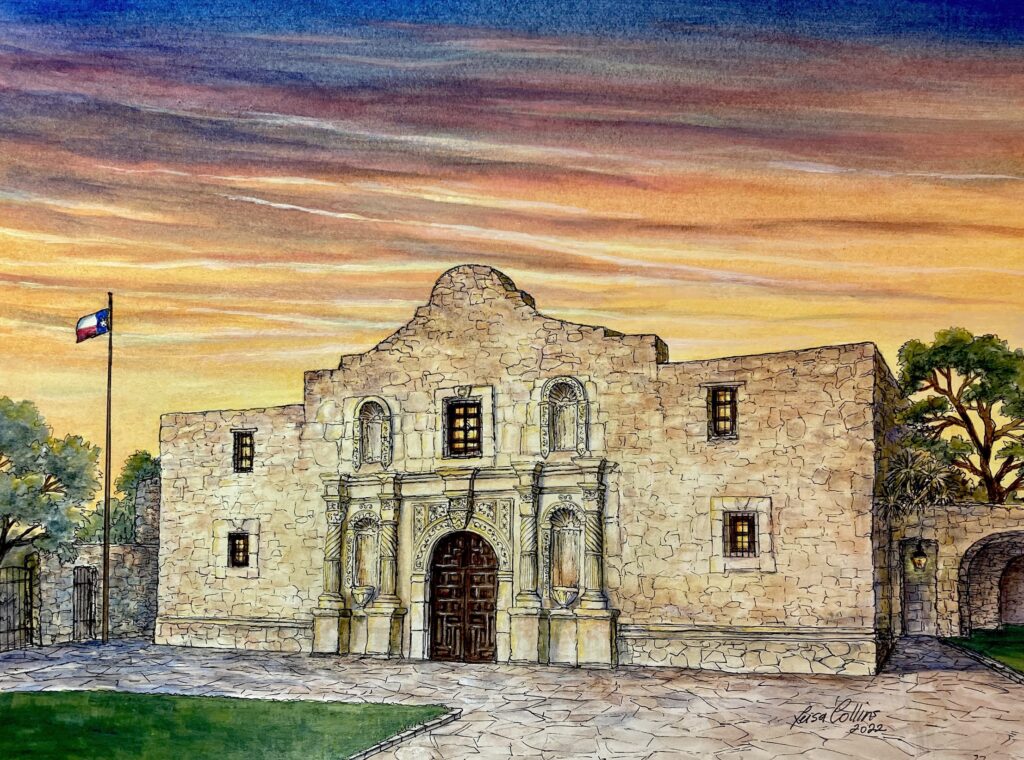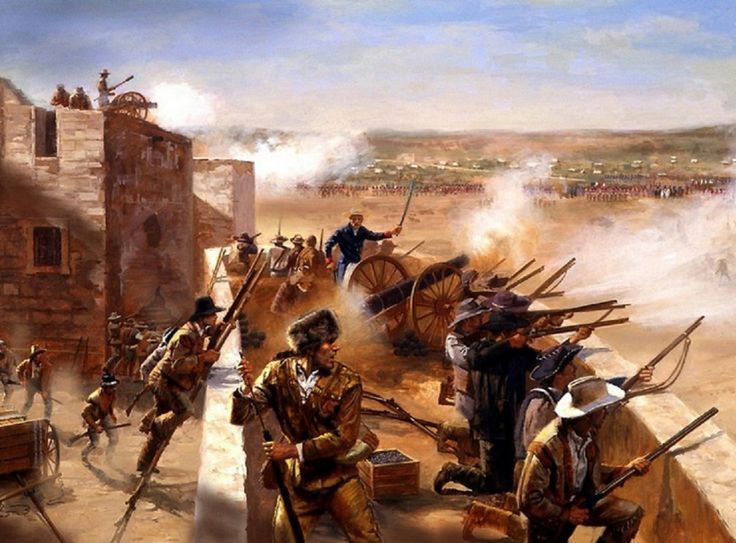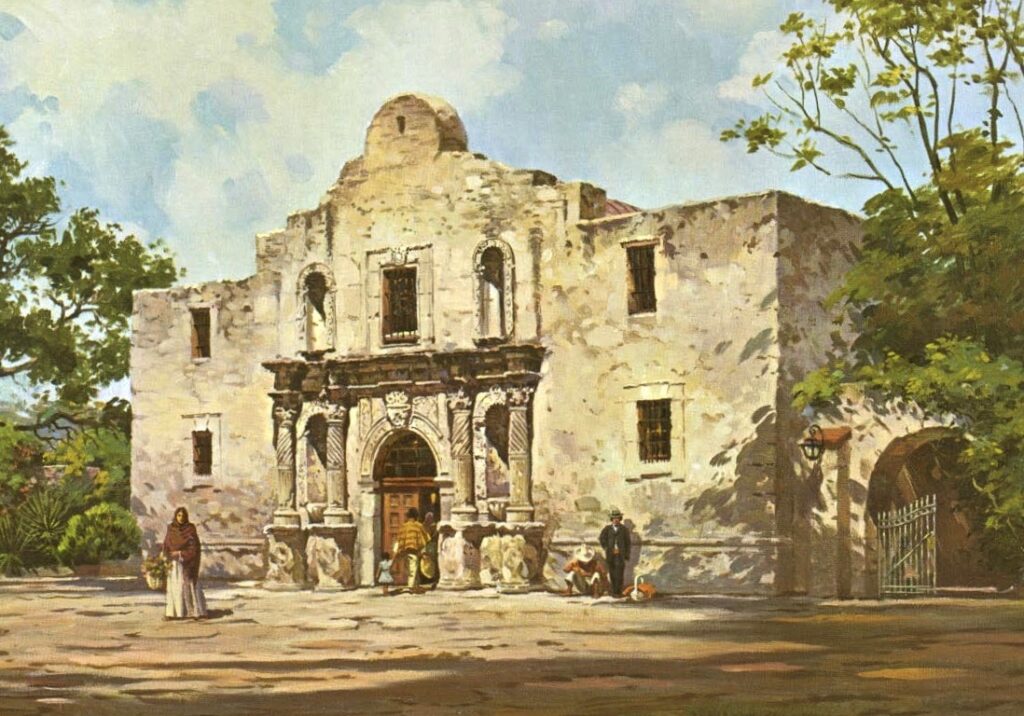To those who gave their lives for freedom . . .
I am honored to tell the story of the Battle of the Alamo with my pen and paint brush. My painting depicts the Alamo as it stands today, battle scarred and worn by the elements, with the Texan flag proudly flying.

Today the Alamo serves as a symbol of freedom and a shrine to those who gave their lives to the cause. It is also an enduring symbol of Texans resistance to oppression and their struggle for independence, which they won shortly after.
The famous saying, “Remember the Alamo!” was often heard in further battles that helped shape the landscape of the western United States. But what did that rallying cry mean to those fighting men and what is the historic significance of the former Franciscan mission located near the present-day city of San Antonio.
The siege of the Alamo fort began on the morning of February 23, 1836. It was undertaken by a Mexican military force numbering in the thousands and led by General Antonio Lopez de Santa Anna. Though tremendously outnumbered, the Alamo’s 200 defenders–commanded by James Bowie and William Travis and including the famous frontiersman Davy Crockett—held out for 13 days before the Mexican forces finally overpowered them on March 6.

Early History of the Alamo
Around 1718, Spanish settlers built the Mission San Antonio de Valero, on the banks of the San Antonio River. They also established the military garrison of San Antonio de Béxar nearby. This would become the San Fernando de Bexar settlement which was later renamed San Antonio. For some 70 years, until 1793, the Mission San Antonio de Valero housed missionaries and their Native American converts.

The Battle of the Alamo
One of the main events leading up to the Battle of Alamo occurred in December 1835. In the early stages of Texas’ war for independence from Mexico, a group of Texan volunteers led by Benjamin Milan and George Collinsworth overpowered the Mexican garrison at the Alamo, capturing the fort and seizing control of San Antonio.
Though the newly appointed commander-in-chief of the Texan forces, Sam Houston, argued that San Antonio should be abandoned due to insufficient troop numbers, the Alamo’s defenders—led by Bowie and Travis—disagreed and were prepared to defend the fort to the last.
The Mexican force, comprising somewhere between 1,800 and 6,000 men (according to various estimates) and commanded by General Antonio Lopez de Santa Anna began the siege of the fort on February 23. The Texans held out for 13 days, but on the morning of March 6, Mexican forces broke through a breach in the outer wall of the courtyard.
The Mexican forces also suffered heavy casualties in the Battle of the Alamo, losing between 600 and 1,600 men. Santa Anna’s men were ordered to take no prisoners, and only a small handful of the Texans were spared.
Texan Retaliation
Mexican forces once again occupied the Alamo from March to May, 1836.
The Battle of the Alamo, became a symbol of heroic resistance and a rallying cry in their struggle for Texan independence. On April 21, 1836, shouting “Remember the Alamo!” as they attacked, Sam Houston and some 800 Texans defeated Santa Anna’s Mexican force of 1,500 men at San Jacinto, situated near present-day Houston. The victory ensured the success of Texan independence. In May, 1836, Mexican troops in San Antonio were ordered to withdraw.
Texas becomes part of the United States
The United States annexed Texas in 1845 and the U.S. Army quartered troops and stored supplies at the Alamo for many years following this.
In the Mexican-American War of 1846-1848, the Alamo remained a symbol of courage and U.S. soldiers revived the “Remember the Alamo!” battle cry while fighting against Mexican forces.
The Alamo has been widely commemorated as an American architectural icon, and the story of the Alamo has been told through folk art, film and song. The state of Texas purchased the Alamo in 1883 and the Daughters of the Republic of Texas has managed the Alamo since 1905. The 4.2-acre site includes some original structures dating back to the mission period.
Having existed under five flags of independent nations and served as a garrison for five different armies, the Alamo has a rich history and a heritage to inspire. Today, more than 2.5 million people visit the Alamo annually.
I am very proud to include the Alamo in my Iconic American Architecture series.
Until next time,
Leisa


